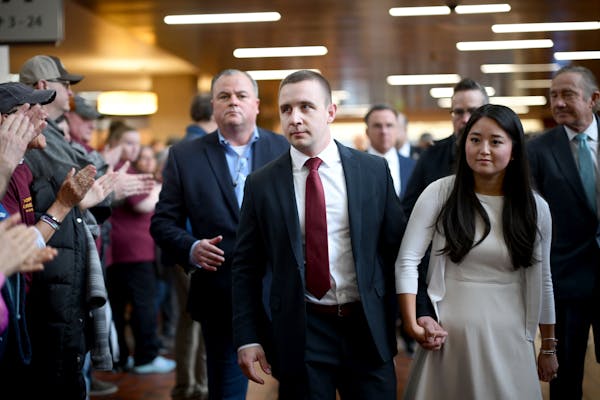It's Central Corridor crunch time, and Ramsey County knows it.
To keep the light-rail plan on track and present a united front with its project partners, the county is willing to let the line stop in front of downtown's Union Depot for now.
The cost-saving compromise, scheduled for a vote at Tuesday's meeting of the Ramsey County Regional Rail Authority, was hailed as a "very helpful development," by Peter Bell, chairman of the Metropolitan Council.
Gov. Tim Pawlenty has threatened to withdraw his support for the project unless costs are trimmed and a design plan completed by month's end.
The 11-mile line from downtown Minneapolis to downtown St. Paul is set for construction to begin in 2010 with completion projected for 2014.
East metro officials declined to talk in detail about the proposed resolution Thursday. "I'm extremely pleased and excited and looking forward to Tuesday," said Ramsey County Commissioner Jim McDonough, chairman of the Rail Authority board.
According to the proposed resolution:
• The line would end on Fourth Street in front of the Union Depot, rather than extending to the depot's abandoned rear concourse, which county officials envision as a regional transportation hub for buses, trains and taxis. That change could save between $32 million and $58 million.
• A maintenance building capable of handling two- and three-car trains would be built on county-owned land near the concourse south of Kellogg Boulevard. That would allow planners to lay the groundwork for an eventual connection to the concourse.
• The county would endorse St. Paul's desire for three additional stops in the Midway area where many residents depend on transit and economic development is badly needed.
The plan doesn't address whether to include a $200 million tunnel University of Minnesota officials want to route the trains under the West Bank campus.
Fulfilling everyone's wish list for the line would cost about $1.25 billion and even without the tunnel or the depot connection, the project is estimated to cost $990 million.
Bell said Thursday that needs to shrink to about $900 million if the project is to win federal approval.
The Met Council will decide on what stays and goes Feb. 27.
The federal government would pay for half the project, or $450 million. The rest would be divided between the state ($300 million), Ramsey County ($105 million) and Hennepin County ($45 million).
But unlocking that federal money requires the project survive a strict pass-fail grading system, set up by Congress, called the "cost-effectiveness index," or CEI.
The CEI takes into account construction costs, ridership and the time riders will save over existing transit. Changing even one element of the proposal can have ripple effects on the line's overall costs and its chances of winning approval from the Federal Transit Agency. It can take 10 to 12 hours for a computer to run a recalculation of the index.
Transit agencies around the country are willing to jump through all the hoops because the federal money for new lines is limited to about $1.5 billion per year.
Although Ramsey County has long fought to get the line to wind to the rear concourse of the Union Depot, the proposed resolution recognizes the need to move forward.
"Each year of delay costs the project $40 million -- money that would be better spend on enhancements to the line than on inflation costs," the resolution states.
The county's resolution was made public one day after the St. Paul City Council passed its own resolution emphasizing the importance of the three additional Midway stops.
University officials also are continuing to look for ways to move the project along, while still addressing concerns about adding trains to already busy Washington Avenue.
Kathleen O'Brien, vice president for university services, said Thursday that planners are looking at ways to make the tunnel less expensive, such as shortening it. Also on the table is creating a transit mall on Washington between the Mississippi River and Oak Street, which would require a study of where more than 25,000 vehicles a day might go. And the university is paying for a study of an alignment that could take light rail through campus via Dinkytown instead of along Washington.
Staff writer Jim Foti contributed to this report. Chris Havens • 651-298-1542

Supporters rally at courthouse as Minnesota State trooper appears for murder hearing
New State Patrol chief opens up about adding women to ranks and fretting over having teen driver at home

